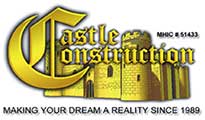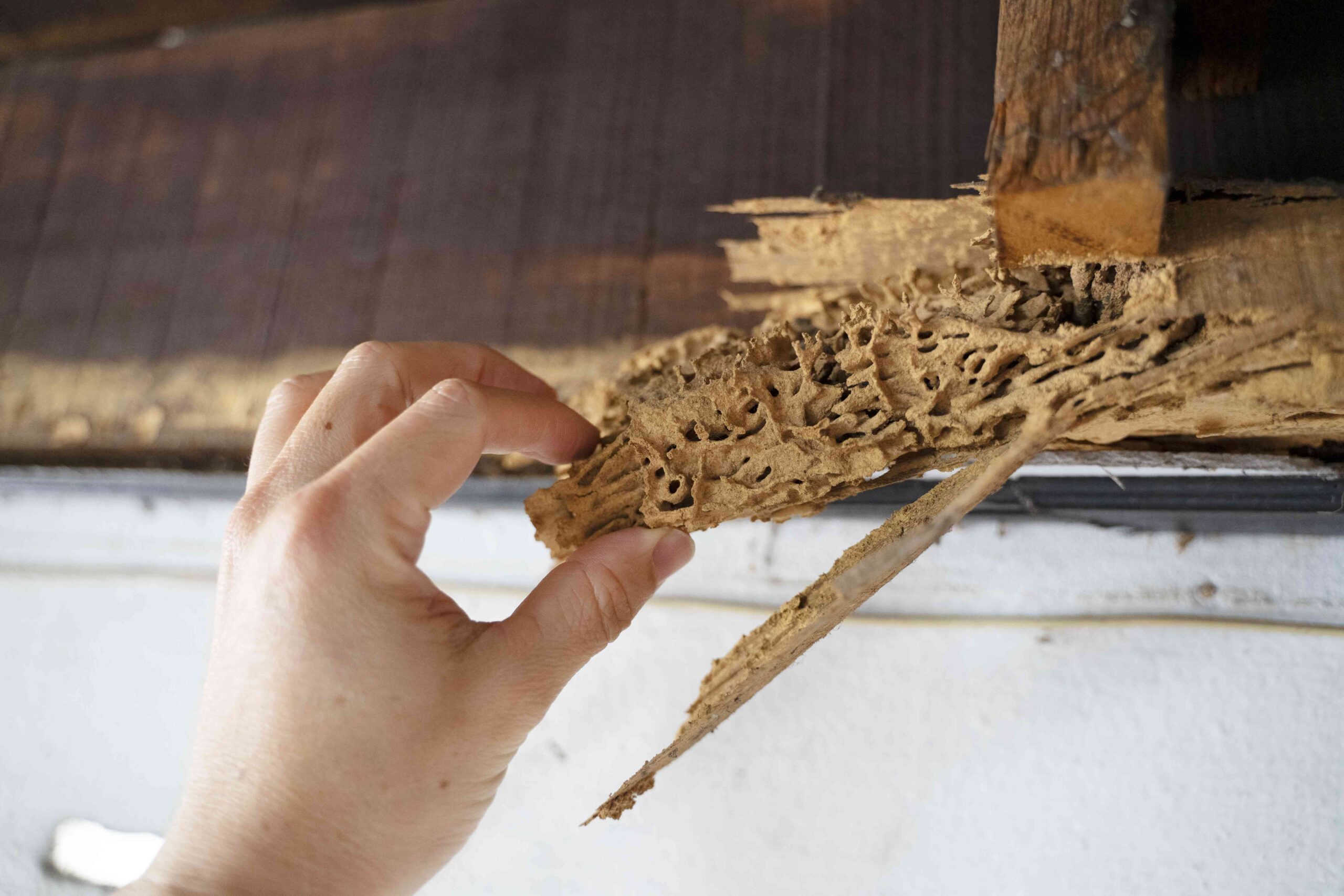To remove termite-damaged wood, first identify the extent of the damage and then extract the affected material. Repairing involves replacing the wood or adding support to weakened areas. termites are crucial to maintaining the structural integrity of your property. Termites can wreak havoc on wooden structures, leading to costly repairs if not addressed promptly. Removing termite-damaged wood starts with a thorough inspection to determine the impact on the property.
Signs And Identification Of Termite-damaged Wood
Identifying termite-damaged wood often begins with spotting visible hollowing. Tiny tunnels, typically unseen, become noticeable when wood feels paper-thin. Termites feast on wood from the inside out, leaving a brittle shell. Mud tubes on wood surfaces are another clue. These pencil-sized tunnels act as termite highways between their colony and their food source. A finer detail to note is termite droppings, resembling sawdust or coffee grounds. Lastly, wood that sounds hollow when tapped or structures that seem unexpectedly weak may indicate a severe termite problem. A screwdriver can sometimes easily penetrate this compromised wood, highlighting the urgency of repair.
The Importance Of Removing Termite-damaged Wood
Termite-damaged wood poses serious risks and often requires removal. Safety is the primary concern since weakened wood can lead to structural failures. Imagine a seesaw that suddenly snaps; the same can happen to termite-eaten floor joists or beams. Immediate removal is critical, especially in areas that support weight. Not only does removal ensure safety, it also stops termites from spreading. Think about illness; if not treated, it can spread and get worse. Termite infestation acts similarly within wooden structures. removing the affected wood, the chance of further destruction diminishes greatly. Regular inspections can spot termite damage early. This practice is like a protective shield for your home, safeguarding against more damage. Without removal, termite colonies can continue to grow, munching through more wood and compromising home integrity.
Assessing The Extent Of Termite Damage
To identify termite damage, start with a simple visual inspection. Look for signs like hollow-sounding wood and tunnels within the wood grain. Not all damage is easily seen. Moisture meters can help to detect higher levels of moisture. Termites are fond of damp spots. These devices pinpoint areas that may hide termite activity.
A professional inspection is often the best step. Experts have tools and knowledge. They find damage that you may miss. They ensure a thorough check.
Choosing The Right Removal Method
Termite-damaged wood requires a choice between DIY methods or professional help. For those comfortable with tackling projects alone, various guides and kits exist. Yet, engaging experts ensures thorough removal and may prevent future infestations.
Considering chemical-based treatments, options like termiticides effectively target the pests. These solutions can penetrate wood, reaching termite colonies. They promise longer-term protection but involve harsh chemicals.
Non-chemical approaches offer a safer alternative. Heat treatments and freezing are popular, as they leave no toxic residues. Sand barriers can also deter termites. These methods are environmentally friendly and suitable for selected cases.
Preparation For Termite-damaged Wood Removal
Preparation for removing termite-damaged wood begins with site clearance. First, clear the surrounding area to ensure ease of access and safety. Remove all movable items such as furniture and decorations to prevent damage.
Next, focus on safety measures. Secure the workspace to keep people, especially kids, away. Wear protective gear, including gloves, safety glasses, and a mask, to safeguard against wood particles and chemicals.
Gathering tools and materials is essential. You will need hammers, pry bars, a saw, and replacement wood. Having a sturdy ladder is also critical. Ensure all tools are in good condition before starting the work.
Step-by-step Process Of Removing Termite-damaged Wood
Termite damage can wreak havoc in your home, but removal is manageable with the right approach. Begin by isolating the infected area to prevent termites from spreading. This might involve taping off sections or removing adjoining furniture.
Next, protect your valuables by moving them away from the affected zone. Cover them with plastic sheets or store in a safe place. Now, remove the infested wood carefully, piece by piece, to ensure complete eradication of damaged material.
Adjacent wood requires treatment with a prophylactic to guard against future infestations; think of this as a protective shield. Lastly, don’t just toss out the damaged wood. Make sure to dispose of it properly, following local disposal regulations, to prevent the spread of termites elsewhere.
Dealing With Complications
Termite damage in wood can wreak havoc on a home’s structure. Ensuring long-term safety requires addressing both the damage and the root cause. Structural reinforcement might involve installing additional supports or replacing weakened beams. This provides the necessary stability to compromised areas.
Repairing damaged sections is a precise task. Professionals may use wood hardeners or epoxy fillers to strengthen affected areas. Occasionally, significant damage demands the removal and replacement of entire sections to restore integrity. Prevention of further termite invasions protects your efforts. Professionals may suggest chemical treatments or physical barriers. Regular inspections ensure early detection and quick response to new threats.
Preventing Future Termite Infestations
Regular inspections are key to spotting termite activity early. Trusted professionals should check for signs twice a year. Specially designed monitoring stations can detect termites before damage occurs.
Ensuring your home has proper ventilation is crucial. It prevents moisture buildup that attracts termites. Areas of concern include attics, basements, and crawl spaces.
Moisture control is another vital step. Fix leaks immediately and ensure your gutters are clean. This denies termites the moisture they need to survive.
Finally, treat wood surfaces with termite repellents. Consider using treated lumber for any new construction or repairs. It’s a good way to deter future termite problems.
FAQs Of Termite-damaged Wood Removed Process
How Do You Remove Termite Damage From Wood?
To remove termite damage from wood, first assess the extent of decay. Replace severely damaged wood. For minor damage, use wood hardeners and fillers, then sand and repaint or stain the surface to restore appearance. Always consult a professional for structural damages.
Should I Remove Termite Infested Wood?
Yes, remove termite-infested wood to prevent further structural damage and stop the spread of termites to other areas.
How Do They Fix Structural Damage From Termites?
To fix termite structural damage, professionals replace or reinforce damaged wood, treat areas with termiticides, and may use bait stations to prevent future infestations. Regular inspections help maintain structural integrity post-repair.
Can A Termite Infested House Be Saved?
Yes, a termite-infested house can often be saved with professional extermination and structural repairs as needed. Regular inspections can prevent future infestations.
Conclusion
Removing termite-damaged wood is vital for maintaining your home’s strength and integrity. This guide ensures you tackle the problem effectively, curbing further damage. Regular inspections and timely intervention are key. Remember, restoring your property’s health is within reach with the right steps.


